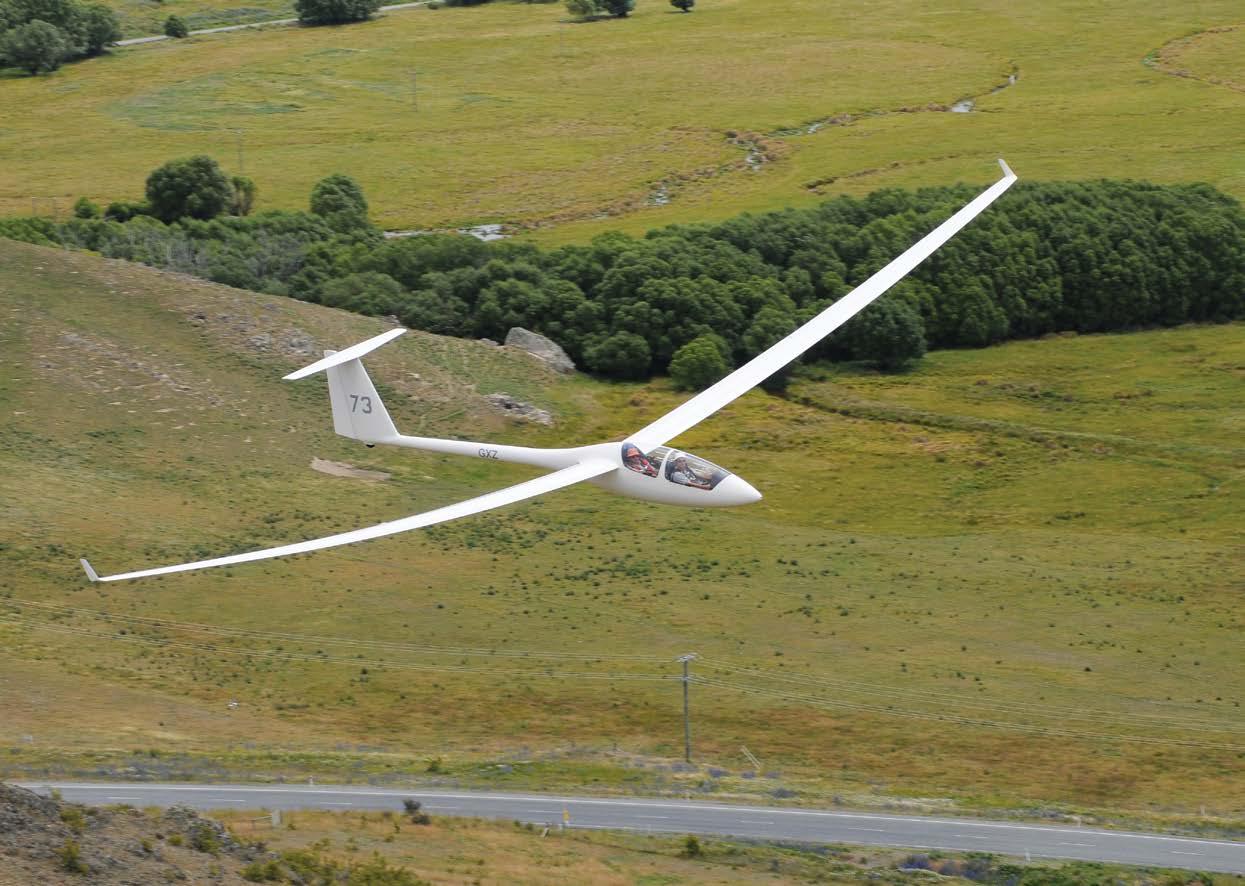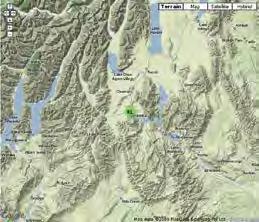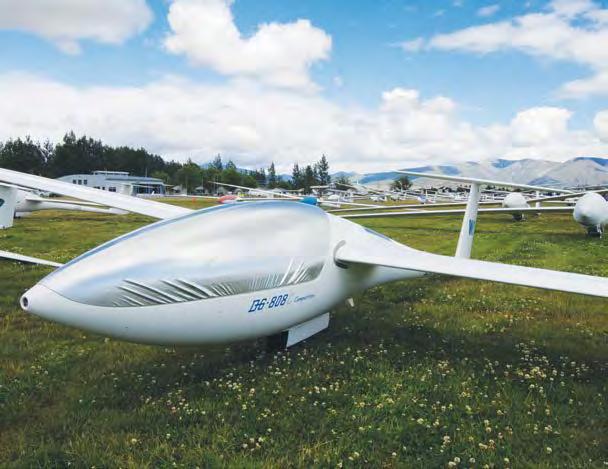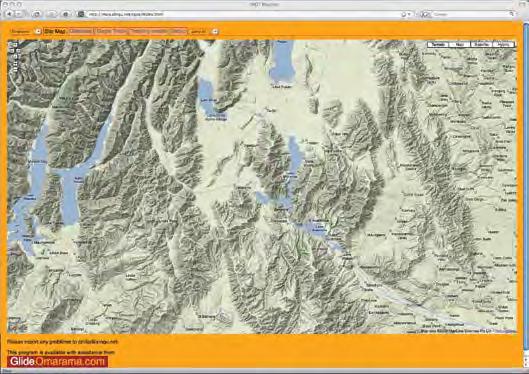
10 minute read
Spot Usage at 2009 Nationals
from SoaringNZ Issue 11
by mccawmedia
By Phil Plane, introduction by Jill McCaw
At the Nationals in January quite a number of gliders were using the SPOT system for tracking and position reporting. Personally I wasn’t particularly interested. To start with, I wasn’t flying in the contest and secondly, here was another piece of musthave new kit. There is always another piece of must-have new kit. By the end of the contest my views had completely changed. The McCaw family will be getting one of these next season and any members flying cross country will be using it.
Advertisement

Why did I change my mind? There were three reasons.
Firstly, I relieved Sue Wild in the radio room for several days. The workload of the radio operators during a contest is high. There is a lot of energy involved in not just correctly organising start and finish procedures but in taking ops normals calls, being aware of where the whole field is and noticing and acting appropriately if calls haven’t been made within the prescribed time frame. Gliders carrying SPOT do not need this service. Gliders carrying a SPOT have their position relayed to a web page every five minutes. If they stop moving a colour change on screen will alert the folk in the office and the pilot’s crew that a retrieve needs to be organised. The position of the landout is instantly known. Because the trace is overlaid on a google terrain map the people in the office can tell if this is a good landout on an airstrip or potentially something more serious. This is a very good thing.
Secondly, the web page of traces was projected on the wall in the Terminal Building so that crew and hangers on could watch progress. It was a rougher and much cheaper version of the high speed flight following of the Grand Prix and every bit as popular. Everyone with an interest could watch how the SPOT gliders were doing. Anyone with web access anywhere could follow the racing. It was certainly well received by crew and families at Omarama.
The third reason I became a SPOT convert is because my son Alex carried a borrowed one. Seventeen year old Alex set out to achieve the goals he had set at the beginning of the summer. He

wanted his 300k and a diamond height. SPOT meant that we could watch his progress and know which side of which ridge he was on. We could see he was soaring Mt Cook and cheer, even as we groaned a little because sometimes he seemed a long way from home. To Alex’s embarrassment his father who was back home in Christchurch knew exactly what he had been up to because he could log on to Phil’s SPOT website and follow him. Alex accused his father of spying. John was fine with that. We felt much happier knowing where our young pilot was.
The following is a transcript of the talk given by Phil Plane at tje AGM on how he turned a simple search and rescue device into a flight following service useful to glider pilots and their supporters. Phil has done all this work voluntarily but I think the SPOT people should be paying him for adding value to their device. Jill McCaw Radio Operator Sue Wild and Roy Edwards
Technical Background
The SPOT satellite messenger is a low cost device that sends a message via satellites. The message is delivered to a base station that forwards it to a central site in the USA. The messages are then delivered by email and/or SMS text messaging to the addresses selected by the operator.
In areas where there is satellite coverage this is very reliable. All of New Zealand has coverage. SPOT claim they are aiming for 98% success at delivering one message in 15 minutes.
The SPOT has four buttons. Each button has an LED that flashes when the button has been activated.

On/Off, which turns the device on.
OK, which sends a message three times at five minute intervals. Only the first message to get through is delivered, the rest are discarded. This is to improve the chance of a message getting through.
Help, which sends a message every five minutes for an hour. All messages are delivered. (This turned out to be the button which made SPOT useful for flight following – Ed) 911, which sends a message every five minutes until the batteries die or the SPOT is switched off. All messages are delivered to the emergency services.
SPOT has a tracking mode that allows the unit to send a message every ten minutes for twenty-four hours. These messages are not passed on from the central site, but are shown on a website. This wasn’t useful for what I was trying to do. It is possible to use the tracking mode and this is what the Australians have done at http:// www.glidingmaps.com. The initial program:
My initial idea was to use the SPOT system to supplement or replace the ‘Ops Normal’ radio messages used at Omarama to keep track of gliders flying from Omarama. The ‘OK’ message can be configured to send an email to any address. I set up a server to receive the messages and produce a map with the location marked. The server had a database linking the SPOT serial number contained in the email to the glider details like registration etc. This allowed the program that displays the map to use an icon with the appropriate glider registration to show the location of the glider.
The initial program worked well. It uses a partially transparent green circle with the glider registration in black as the icon for a recent location. After an hour the icon changes to a partially transparent orange circle, and after two hours to a solid red circle. This is in keeping with the policy at Omarama of having hourly ‘Ops Normal’ calls and starting to get seriously worried after two hours.
The map display program only shows the most recent message for each SPOT.

Phillip Plane
Further enhancement
I had a visit from the importer of SPOT in Christchurch. While we were chatting he mentioned that the ‘Help’ button sent a stream of messages, all of which were delivered. That isn’t obvious from the documentation, and I wasn’t aware that SPOT did that. I ran a few tests and sure enough, the ‘Help’ button gave an hour’s worth of tracking. This didn’t require any change to the map display program, just to the configuration of the SPOT. If the ‘Help’ messages are delivered to the email address used for the ‘OK’ Ops Normal system, you get an email every five minutes for one hour.

Trace history
Once the mapping program was working I wanted to see the day’s history from each SPOT. This is so that if a glider goes missing we can easily see where it has been, and get an idea of where it was headed when the messages stopped. This has developed into the track map which allows you to select the glider and the date, and shows all messages received from that SPOT on that day. The points have a green ring with a sequence number so you can see the direction of travel. The ring is red if the point is less than 100 metres from the previous point.
Each point can be clicked on to bring up additional information, including a link to Google maps to get driving directions to the point.
The ability to get driving directions was added at the suggestion of Roy Edwards during the Nationals.
Roy Edwards – Contest Director at 2009 Nationals


Fig. B



Fig. D


Fig. F
Some images taken from the spotmap website:
Fig. A is midday on 10 January. Fig. B show the progression during the day. Towards the end of the day the icons go orange to show the SPOT message is over an hour old, then red to show the message is over two hours old. As people land and turn off their SPOTs the icons time out. Fig. C shows the info box that can be displayed from any icon. It shows the time, location, and information from the database of gliders and pilots. Fig. D shows the trace for the day, zoomed in to clarify the use of the red circle to show that the SPOT has stopped moving, as happens when the glider lands. In this case it has landed on the Omarama airfield. If it was a landout it would be obvious from this where the glider had landed. Fig. E shows the trace for a glider for the day. Fig. F shows the info box from any of the trace points. Notice the link for driving directions.
How has it worked?
We have found the SPOT system reliable. There have been some problems when the SPOT systems seemed to stop passing messages for an hour or so, and the server for map.xinqu.net got powered off accidentally once, but the system has been in use since November 2008 with very little downtime.
During the Nationals having SPOT tracking available took a lot of load off the radio for Ops Normal. The contest director was very happy with the way it worked and the extra information it provided.
The SPOT units are robust and reliable. They do need a good view of the sky to get good results. If there is nowhere to mount the SPOT on the panel or glareshield the unit can be clipped to the shoulder straps. Putting the SPOT in the side pocket in the glider doesn’t get a good result.
When the SPOT units have been carried around in the mountains they continue to provide tracking in the bottoms of the valleys.
Battery life is good. The unit used in the DG1000 is just starting to flash the power LED red to indicate low battery. It has been in daily use since the start of November, so it has lasted over three months of daily use. A new set of batteries costs $15.
The mapping system is quite basic and is really just a proof of concept. There is much development to be done, and over the winter I expect to improve the presentation of the tracking and add many new features which have been suggested by users.

Please check out the website below http://map.xinqu.net/spot.html
Phil now has support for multiple sites, including different timezones. He adds that if clubs want to use the system he is happy to add their sites. Philip Plane can be contacted at philip@xinqu.net

NZ Agents Alan & Donna Clarke 021 400 120 www.lightsportaircraft.co.nz email alan@acfs.co.nz
PIPISTREL TAURUS • Glide ratio 41:1 • Side by side two seater • No engine • Or Rotax 503 engine • Or electric engine


PIPISTREL SINUS • Glide ratio 30:1 • Tested to +7g & -7G • 100+ knot cruise with Rotax 912 • Two seat tourer / glider / trainer • Feathering propeller


PIPISTREL APIS BEE • Glide ratio 40:1 • Single seat • No engine • or Hirth engine • or electric engine











